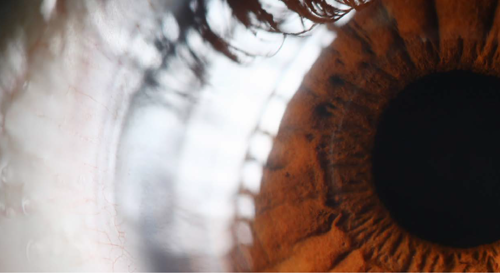Cornea
Studies Shed Light on Long-Term Cross Linking Outcomes
New software helps evaluate progression.

Dermot McGrath
Published: Thursday, March 2, 2023
“ Based on the current evidence, we can confidently tell our patients older than 18 years old that the treatment is safe and well tolerated over the long term, with a progression rate below 10%. “
Long-term studies of corneal cross-linking (CXL) for keratoconus treatment are providing clinicians with valuable information about the enduring safety and efficacy of different CXL protocols while underscoring the need for better definitions of disease progression, according to Riccardo Vinciguerra MD.
Reviewing the evidence from the studies with more than 10 years of follow-up, Dr Vinciguerra said CXL using the standard Dresden protocol is safe with low to intermediate progression rates.
“Based on the current evidence, we can confidently tell our patients older than 18 years old that the treatment is safe and well tolerated over the long term, with a progression rate below 10%,” he said.
One of the key issues in comparing outcomes from different studies is the lack of an agreed definition of keratoconus progression.
“There is a lack of consensus regarding the definition of progression—even preoperatively—never mind after CXL,” Dr Vinciguerra noted. “We have a difference in the repeatability of measurements for assessing progressive disease at different stages, and this difference is accentuated after CXL treatment.”
More recently, the integration of the Belin ABCD progression display system in the native Pentacam® (Oculus) software has helped clinicians evaluate disease progression before and after CXL.
The ABCD software evaluates average anterior (A) and posterior curvature (B) values in a 3-mm optical zone centred on the thinnest point of the cornea and in the thinnest pachymetry (C). The software also shows 80% and 95% confidence intervals (CI) for normal and keratoconic populations. The “D” value is Snellen corrected distance visual acuity, entered manually in the Pentacam software.
The ABCD Progression Display graphically presents each parameter and shows when statistical change above measurement noise is reached using colour-coded maps. A recent upgrade to the system enabled the addition of confidence intervals for post-CXL changes to the progression display.
“Our definition for progression after CXL was at least two out of three of the following criteria: progression of A parameters more than 95% CI compared to baseline; progression of B more than 95% CI compared to baseline; and reduction of minimal pachymetry of at least seven microns compared to baseline and 95% CI,” he said.
Using these criteria, two out of 27 eyes of 22 patients (7.4%) showed significant progression with a mean follow-up of 11 years. Dr Vinciguerra said the study showed the value using a combined progression system that evaluates anterior and posterior curvature and thickness map together with the knowledge of the testing system noise level.
Epi-off CXL also achieved good safety and efficacy in 38 eyes of 24 paediatric patients with up to 14 years of follow-up.
“Based on the same criteria for failure using the ABCD Progression Display, 34% of the cases progressed,” he said. “However, the figure was only 7.1% if considering only the anterior curvature (A values) and our results are broadly in line with those of Mazzite [et al.] who reported a 24% progression rate over 10 years in paediatric patients.”
Dr Vinciguerra also presented data for transepithelial iontophoresis-assisted CXL (I-CXL) in 19 eyes of 19 patients and a maximum of seven years of follow-up.
“Our study showed I-CXL was able to stop K progression in most cases with 21% progression rate. However, it is important to note that if we had based our definition on the event of repeat CXL or transplant, only one patient would have progressed, and based on a change of 1.0 D of Kmax, only two patients would have progressed,” he said.
Dr Vinciguerra presented at the 40th Congress of the ESCRS in Milan.
Riccardo Vinciguerra MD is an ophthalmologist and scientific responsible at the the Humanitas San Pio X Hospital, Milan, Italy, as well as a research collaborator at Biochemical Engineering Group, University of Liverpool, United Kingdom. vinciguerra.riccardo@gmail.com

Latest Articles
Towards a Unified IOL Classification
The new IOL functional classification needs a strong and unified effort from surgeons, societies, and industry.
Organising for Success
Professional and personal goals drive practice ownership and operational choices.
Update on Astigmatism Analysis
Is Frugal Innovation Possible in Ophthalmology?
Improving access through financially and environmentally sustainable innovation.
iNovation Innovators Den Boosts Eye Care Pioneers
New ideas and industry, colleague, and funding contacts among the benefits.
José Güell: Trends in Cornea Treatment
Endothelial damage, cellular treatments, human tissue, and infections are key concerns on the horizon.
Making IOLs a More Personal Choice
Surgeons may prefer some IOLs for their patients, but what about for themselves?
Need to Know: Higher-Order Aberrations and Polynomials
This first instalment in a tutorial series will discuss more on the measurement and clinical implications of HOAs.
Never Go In Blind
Novel ophthalmic block simulator promises higher rates of confidence and competence in trainees.